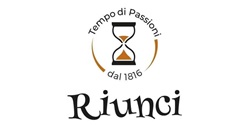The Sannio Consortium leads the way with voluntary adoption of advanced anti-counterfeiting technology, extending soon to IGT Emilia and beyond
ROME – The introduction of identity bands for IGT wines in Italy represents a significant step forward in the traceability and assurance of wine quality. The Consorzio del Sannio is at the forefront of this initiative, beginning with its IGT Benevento wines. This innovative measure will soon extend to IGT Emilia, including the renowned Lambrusco.
Designed and produced by the Istituto Poligrafico e Zecca dello Stato, these new bands feature advanced anti-counterfeiting technology and a QR code. When scanned, the QR code provides consumers with a digital passport containing detailed information about the wine’s production, along with serving suggestions and additional insights. This system enhances transparency and helps consumers make more informed purchasing decisions.
Although not mandatory and thus available upon request, several producers have already begun adopting these identity bands. This new identification document is now available for IGT wines, of which there are 118 in Italy.
European Wine Classification System
At the European level, the wine classification system is designed to ensure the quality and authenticity of wines produced within the EU. This system includes two main categories:
- DOP (Denominazione di Origine Protetta / Protected Designation of Origin):
- DOCG (Denominazione di Origine Controllata e Garantita): The highest classification for Italian wines, DOCG wines must pass strict quality controls and official tastings. Each bottle is marked with a numbered seal to prevent counterfeiting. Examples include Brunello di Montalcino and Chianti from Tuscany.
- DOC (Denominazione di Origine Controllata): These wines also follow stringent regulations but are slightly less restrictive than DOCG. They cover a wide variety of wines, such as Montepulciano d’Abruzzo and Soave.
- IGP (Indicazione Geografica Protetta / Protected Geographical Indication):
- Known as IGT (Indicazione Geografica Tipica) in Italy, this category offers greater flexibility in winemaking techniques and grape varieties. It guarantees that the wine originates from a specific region, although the regulations are less stringent than those for DOP wines. Examples include Toscana IGT and Veneto IGT.
The Role and Benefits of the New Bands
The new bands for IGT wines aim to protect the authenticity of Italian wines and provide consumers with a guarantee of origin and quality. By scanning the QR code on the band, consumers can access comprehensive information about the wine’s production process, including details about the vineyard, the grape varieties used, and the winemaking techniques employed. This level of transparency not only builds consumer trust but also supports the reputation of Italian wines in the global market.
Conclusion
The adoption of identity bands for IGT wines is a progressive step that aligns with the broader European framework for wine classification and quality assurance. It reflects a blend of tradition and innovation, aiming to protect the heritage of Italian wines while meeting the modern demands for transparency and traceability.











